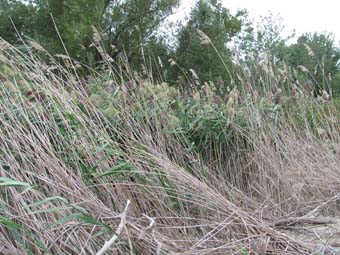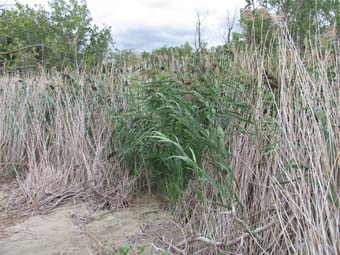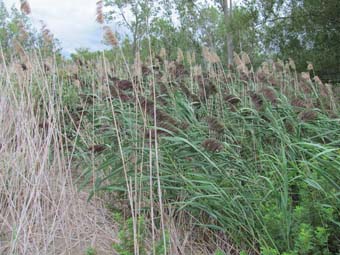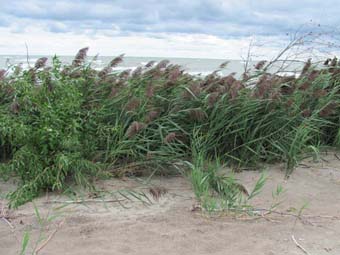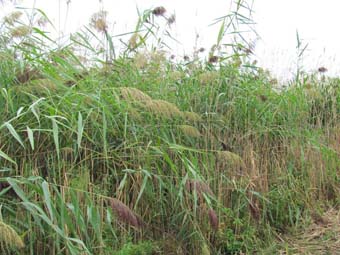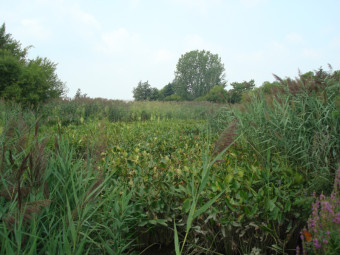Common Reed Marsh
System: Palustrine
Subsystem: Herbaceous
PA Ecological Group(s): Marsh Wetland and Basin Wetland
Global Rank:GNA
![]() rank interpretation
rank interpretation
State Rank: SNA
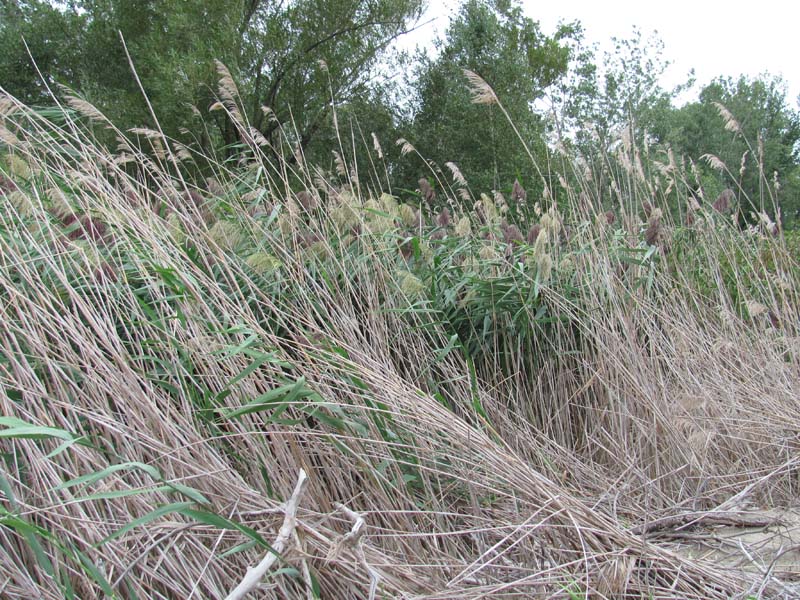
General Description
Common Reed Marsh occurs in standing water for most or all of the year and is often associated with impounded drainages, ponded areas near streams, or saturated areas surrounding drainages. The community occurs on poorly drained soils, usually mucky silt loam or shallow mucky peat. Vegetation is strongly dominated by common reed (Phragmites australis ssp. australis), which can form nearly monotypic stands. Other associated species may include common cat-tail (Typha latifolia), wool-grass (Scirpus cyperinus), smartweeds (Persicaria spp.), bonesets (Eupatorium spp.), sensitive fern (Onoclea sensibilis), and rice cutgrass (Leersia oryzoides). The exotic invasive species narrow-leaved cat-tail (Typha angustifolia) and purple loosestrife (Lythrum salicaria) can be present in these wetlands.
Rank Justification
This community has not been assessed.
Identification
- Near monotypic stands of common reed (Phragmites australis ssp. australis)
- Occurs on impounded drainages, ponded areas near streams, or saturated areas surrounding drainages
Herbs
Exotic Species
* limited to sites with higher soil calcium
Vascular plant nomenclature follows Rhoads and Block (2007). Bryophyte nomenclature follows Crum and Anderson (1981).
International Vegetation Classification Associations:
USNVC Crosswalk:None
Representative Community Types:
Eastern Reed Marsh (CEGL004141)
NatureServe Ecological Systems:
North-Central Interior Freshwater Marsh (CES202.899)
NatureServe Group Level:
None
Origin of Concept
Fike, J. 1999. Terrestrial and palustrine plant communities of Pennsylvania. Pennsylvania Natural Diversity Inventory. Pennsylvania Department of Conservation and Recreation, Bureau of Forestry, Harrisburg, PA. 86 pp.
Pennsylvania Community Code*
na : Not Available
*(DCNR 1999, Stone 2006)
Similar Ecological Communities
Common Reed Marsh can have similar species as Bluejoint – Reed Canary-grass Marsh and Mixed Forb – Graminoid Wet Meadow but differs between these types as it is clearly dominated by an almost monotypic stand of common reed (Phragmites australis ssp. australis).
Fike Crosswalk
None. This type is new to the Pennsylvania Plant Community Classification developed from PNHP inventory studies.
Conservation Value
This community can colonize disturbed ponds, impounded drainages, ponded areas near streams, or saturated areas surrounding drainages and displace native plant species and communities. However while this community is associated with decreasing native species diversity, the community also serves as a buffer for sediment and pollution runoff from adjacent developed lands by slowing the flow of surficial water, causing sediment to settle within this wetland.
Threats
This community can be a threat to other wetland communities through the clonal growth of common reed (Phragmites australis ssp. australis) and displacement of other vegetation types.
Management
It is important to prevent the spread of this community through invasive species control, and a natural buffer around the wetland should be maintained in order to minimize the spread of this community into adjacent vegetation.
Research Needs
This community is dominated by an exotic invasive species and there is an increasing need to document the impacts of this community on native plant species and communities.
Trends
The trend of this community is increasing due to the strong competitive nature of common reed (Phragmites australis ssp. australis) within altered environments. Common reed is able to colonize disturbed areas and form monotypic clonal stands which decrease both light and nutrient availability to native species.
Range Map
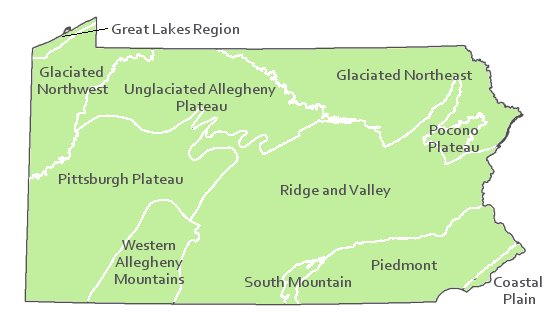
Pennsylvania Range
Statewide.
Global Distribution
Alabama, Arkansas, Connecticut, Delaware, Florida, Georgia, Iowa, Indiana, Louisiana, Maine, Maryland, Massachusetts, Michigan, Minnesota, Missouri, North Carolina, New Hampshire, New Jersey, New York, Ohio, Pennsylvania, Rhode Island, South Carolina, Texas, Virginia, Vermont, Wisconsin, and West Virginia.
Pennsylvania Department of Conservation and Natural Resources (DCNR). 1999. Inventory Manual of Procedure. For the Fourth State Forest Management Plan. Pennsylvania Bureau of Forestry, Division of Forest Advisory Service. Harrisburg, PA. 51 ppg.
Stone, B., D. Gustafson, and B. Jones. 2006 (revised). Manual of Procedure for State Game Land Cover Typing. Commonwealth of Pennsylvania Game Commission, Bureau of Wildlife Habitat Management, Forest Inventory and Analysis Section, Forestry Division. Harrisburg, PA. 79 ppg.
Cite as:
Eichelberger, B. 2022. Pennsylvania Natural Heritage Program. Common Reed Marsh Factsheet. Available from: https://www.naturalheritage.state.pa.us/Community.aspx?=30005 Date Accessed: April 24, 2024

